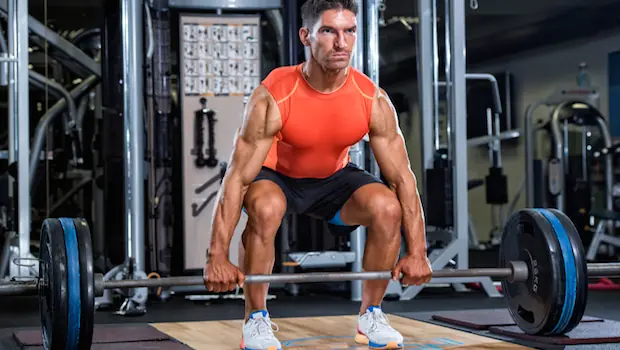
Spend enough time on the Internet, and you'll come across two strains of fitness information. There's the hardass wing, where trainers claim, with militant certainty, that anybody can do anything. Deadlift double your body weight? Squat butt-to-calves? Bench press with two wheels on each side? You just have to want it bad enough.
Guys who follow advice like this discover a fundamental truth sooner or later: While the brain gets a vote, the body retains veto power.
Those who get the memo about their limitations often scurry to the opposite side of the industry, where you can find countless articles about how to train for your body type. The idea is that the shape of your body determines not only how good, bad, or ridiculous you look in a Speedo, but also how you should approach the process of getting into better shape.
Curiously, those who promote this notion are convinced humans have just three or four basic shapes. Most go with the classic somatotypes: ectomorph (skinny), endomorph (big-boned), and mesomorph (the guy who never worries about his body type because everything he does seems to work).
Women may find different nomenclature, like pear (bottom-heavy), ruler (narrow hips and shoulders), hourglass (yes!), or apple (more in the middle). But it's the same concept: Your workout isn't working because it's not custom-tailored to your unique dimensions.
Strength coach Alexander Juan Antonio Cortes was curious about the origins of the three somatotypes. As he explained in this article, the original idea had nothing to do with fitness or weight loss. Instead, it was the foundation of "constitutional psychology," a mostly discredited science that equated body shape with intelligence, temperament, and overall value to society. (It's also been partially supported, since mesomorphs, the lucky bastards with naturally muscular physiques, tend to have better athletic and reproductive success, leading to more career options and higher income.)
More From Men's Health: 6 Insanely Fit Guys Reveal One Thing They Do Every Day
What does body type have to do with your workouts? If you're talking about the basic design of your program, nothing. But when it comes to exercise selection, all of us need to tweak things to accommodate our bodies' unique dimensions, structural challenges, and occasional asymmetries.
"Training is absolutely not a black and white concept, like many feel it should be," says Dean Somerset, CSCS, a trainer and rehab specialist based in Edmonton. That's true for any athletic pursuit or training goal, but he says it's especially important when it comes to exercise selection. "You have to see how the person does with the exercise to gauge whether it would work for them or not."
Let's explore.
Lower Body
In a recent post Somerset explained that nobody's hip joints are exactly the same as anybody else's. (Proving that, yes, you really are a special snowflake.) Some hip sockets are deeper. The femoral neck, the piece at the top of the thigh that fits into the socket, can be relatively thick or thin. The angle of the neck, in relation to the shaft of the thighbone, can also be dramatically different from one person to the next.
And most mind-blowing of all: These things can be slightly different on the left and right sides of the same person.
All these nuances, invisible for the outside, affect your range of motion on squats. "Some people won't ever squat ass-to-grass due to their hip anatomy," Somerset says. "But that doesn't mean they should never squat, or would always have pain with squats."
What is true is that the anatomy you bring into the weight room is the anatomy you were born with, and will always have. If it limits the depth of your squats, so be it. Somerset has range-limited clients squat to a box, and says they still develop leg strength without pain.
More From Men's Health: 4 Exercises You Should Do Every Day
When it comes to performance in the squat, Cortes notes that anatomy very much matters. Those with shorter legs and wider hips won't often win a footrace, but they have a big advantage in lower-body strength and muscle development. "Wider hips can simply support a lot more weight," he says, and shorter legs cut the range of motion.
Conversely, a guy with longer legs is going to have to descend farther when he squats, and has a much longer range of motion on his deadlifts. There's more that can go wrong, and more potential stress on the most vulnerable joints in the lower back.



